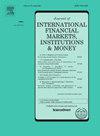通过共享分析师覆盖率检测跨公司动量效应:领导者的角色
IF 6.1
2区 经济学
Q1 BUSINESS, FINANCE
Journal of International Financial Markets Institutions & Money
Pub Date : 2025-10-10
DOI:10.1016/j.intfin.2025.102237
引用次数: 0
摘要
通过共享分析师报道的跨公司动量效应在发达市场中得到充分证明,但在信息扩散不对称且分析师报道高度集中的新兴市场中,其稳健性尚不清楚。我们的研究在一个极度信息摩擦的环境中——中国市场——重新审视了这种效应。通过引入一种新的基于强度中心性(SC)的加权方案,重构了分析师覆盖网络中的信息传输通道。这一指标确定了那些获得分析师和市场不成比例关注的有影响力的领先公司。我们的研究结果表明,sc加权关联公司回报稳健地预测横截面股票回报,即使在严格的股票过滤下也能产生显著和持续的利润。这种表现不能被基于替代加权方案的策略或行业内跨公司动量和信息离散性等解释所包含。进一步的分析表明,基于sc的方法的优势源于它能够有效地识别具有更强的跨时期基本联系的公司。此外,高sc股票的特点是投资者关注度更高,信息处理效率更高,套利成本更低,国际敞口更大。有了这一证据,我们进一步证实了一种定向溢出:跨公司的动量效应只从这些高sc的领导者流向低sc的落后者,而不存在反向溢出。我们的研究结果表明,在许多国际市场中,由于方法上的限制,而不是经济上的无关性,跨公司动量可能被系统性地低估了。因此,基于sc的框架为在信息不对称环境中操作的全球投资者和研究人员提供了一种便携式工具。本文章由计算机程序翻译,如有差异,请以英文原文为准。
Detecting cross-firm momentum effects via shared analyst coverage: The role of leaders
Cross-firm momentum effects via shared analyst coverage are well-documented in developed markets, but their robustness remains unclear in emerging markets, where information diffusion is asymmetric and analyst coverage is highly concentrated. Our work revisits this effect in an environment of extreme informational frictions — the Chinese market. We reconstruct the information transmission channel within the analyst coverage network by introducing a novel weighting scheme based on strength centrality (). This measure identifies influential leader firms that command disproportionate attention from both analysts and the market. Our results demonstrate that -weighted connected-firm returns robustly predict cross-sectional stock returns, yielding significant and persistent profits even under a rigorous stock filter. This performance cannot be subsumed by strategies based on alternative weighting schemes or by explanations such as intra-industry cross-firm momentum and information discreteness. Further analysis reveals that the superiority of the -based approach stems from its ability to effectively identify firms with stronger cross-period fundamental linkages. In addition, high- stocks are characterized by higher investor attention, more efficient information processing, lower arbitrage costs, and greater international exposures. With this evidence, we further confirm a directional spillover: cross-firm momentum effects flow exclusively from these high- leaders to low- laggards, and there is no reverse spillover. Our findings suggest that cross-firm momentum may be systematically underestimated in many international markets due to methodological limitations rather than economic irrelevance. The -based framework therefore offers a portable tool for global investors and researchers operating in environments with asymmetric information.
求助全文
通过发布文献求助,成功后即可免费获取论文全文。
去求助
来源期刊
CiteScore
6.60
自引率
10.00%
发文量
142
期刊介绍:
International trade, financing and investments, and the related cash and credit transactions, have grown at an extremely rapid pace in recent years. The international monetary system has continued to evolve to accommodate the need for foreign-currency denominated transactions and in the process has provided opportunities for its ongoing observation and study. The purpose of the Journal of International Financial Markets, Institutions & Money is to publish rigorous, original articles dealing with the international aspects of financial markets, institutions and money. Theoretical/conceptual and empirical papers providing meaningful insights into the subject areas will be considered. The following topic areas, although not exhaustive, are representative of the coverage in this Journal. • International financial markets • International securities markets • Foreign exchange markets • Eurocurrency markets • International syndications • Term structures of Eurocurrency rates • Determination of exchange rates • Information, speculation and parity • Forward rates and swaps • International payment mechanisms • International commercial banking; • International investment banking • Central bank intervention • International monetary systems • Balance of payments.

 求助内容:
求助内容: 应助结果提醒方式:
应助结果提醒方式:


